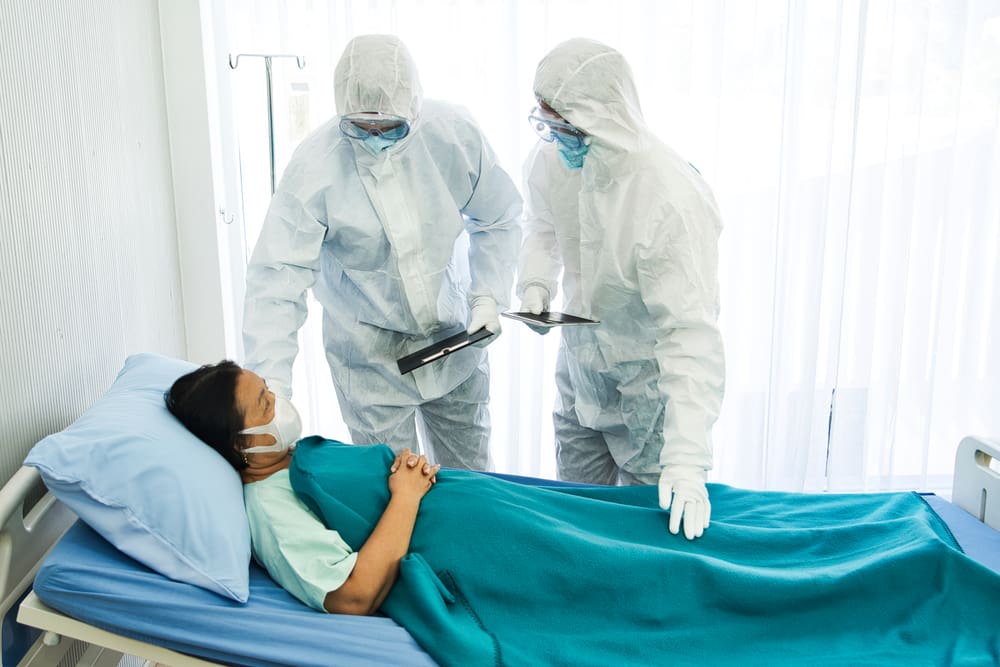During the current pandemic Americans are dealing with a complete or near complete disruption of everyday life. It is the same for persons with opioid use disorder (OUD), but they are far from the forefront of public concern. Federal and state agencies have recognized that viral transmission is now a greater health risk than diversion of medications that treat OUD. In response, there is a temporary suspension of some of the long-standing and draconian regulatory requirements that must normally be followed in order for programs and patients to administer and receive effective treatment. The COVID crisis is an important opportunity to change policy and ensure that these temporary exemptions become permanent, thereby increasing treatment accessibility.
As nurses who work with individuals around OUD, we see first-hand that they experience worse health outcomes when compared with patients with any other chronic health condition. Nurses are committed to the value that all persons who receive care have a right to the highest quality care. As advocates for persons with OUD, we point out that federal treatment regulations unintentionally act as barriers to care delivery for persons with OUD. Many people with OUD cannot meet these treatment requirements even in the best of circumstances and they shouldn’t have to. We advocate for permanent removal of these barriers to promote equitable health care for this population.
Imagine being a person with OUD. You’re fortunate that effective medications exist to help you, but availability is limited, and you have to wait weeks for an appointment. Once accepted into treatment, you enter a highly regulated system of care that requires daily face-to-face visits with providers, in close physical proximity to other patients. Your treatment initiation and ongoing care must take place at a specially licensed clinic. You spend most of your first treatment day completing required physical examinations and paperwork. You must give a urine sample for drug testing, which you are required to do 8 times annually for the duration of treatment. You go to a window where each day you’re required to speak directly with a nurse both before and after receiving your daily dose. You must attend counseling. You follow mandated procedures until you’re trusted enough to receive one or two “take home doses” of medication each week.
Now imagine these mandated treatment regulations are permanently lifted. With the current temporary easements, buprenorphine treatment initiation can occur via a telehealth visit, as can follow-up visits. Medications for opioid use disorder can currently be dispensed for up to 28 days for people who are stable (14 days if less stable), as with any controlled substance. Injectable buprenorphine, which is effective for 1 month, is more readily used than ever before. Clinics are making better use of medication delivery or medication dispensing by pharmacists.
In 2018, only 1 in 4 Americans with OUD received treatment of any kind. The interface of the opioid epidemic with the COVID19 pandemic and the need for social distancing creates a window for change. But why should crisis be required to change these draconian regulations?
Methadone and buprenorphine are medications approved by the Food and Drug Administration (FDA) for OUD treatment. Methadone, in use since 1964, can be dispensed for OUD only in federally approved Opioid Treatment Programs (OTPs). Some of the legislated methadone treatment requirements are detailed above. Buprenorphine can also be dispensed in OTPs according to these regulations. Additionally, buprenorphine can be prescribed to treat OUD in office-based settings with less strict, though still present, governmental regulations, including limits on the number of patients who can receive buprenorphine from any provider, regardless of community need or clinical capacity.
To be sure, oversight is needed to assure that persons in need of these medications are the recipients. But methadone prescribing practice in Scotland and England changed in the mid-1990s with pharmacist-supervised methadone dosing. Over a 16-year period, treatment rates increased dramatically, including reduced deaths due to overdose involving prescribed methadone. If the US followed the UK model for methadone, persons being treated with this medication would have less disruption to their daily lives.
The current pandemic highlights the need to examine the merits of the long-standing regulations that were largely driven by public safety concerns. Regulatory requirements now act as treatment barriers that should be permanently removed to make care for OUD more equitable with treatment for other chronic health conditions. These changes will improve the health and quality of life for individuals overcoming OUD, a large and highly stigmatized group of Americans.

Matthew Tierney
Clinical Professor, UCSF School of Nursing
Clinical Director of Substance Use Treatment & Education, UCSF Office of Population Health
2 Koret Way,
San Francisco CA
Matt.Tierney@UCSF.edu
Potential conflicts of interest: none
 Kathleen Delaney
Kathleen Delaney
Professor
Rush College of Nursing
600 S Paulina
Chicago, Illinois
Kathleen_R_Delaney@rush.edu
Potential conflicts of interest: none
 Deborah S. Finnell
Deborah S. Finnell
Professor Emerita
Johns Hopkins School of Nursing
Baltimore, MD
dfinnell@jhu.edu
Potential conflicts of interest: none
 Madeline Naegle
Madeline Naegle
Professor Emerita and Adjunct Professor
New York University Meyers College of Nursing
433 First Avenue
New York City 10010
man1@nyu.edu
Potential conflicts of interest: none
Mona Shattell
Associate Dean for Faculty Development
Johns Hopkins School of Nursing
525 N. Wolfe St.
Baltimore, MD
Mona.shattell@jhu.edu
Potential conflicts of interest: none
 Mona Shattell, PhD, RN, FAAN is Associate Dean for Faculty Development and Isabel Hampton Robb Distinguished Scholar in the Johns Hopkins School of Nursing in Baltimore. She also holds a joint appointment in the Johns Hopkins Bloomberg School of Public Health, in the Department of Environmental Health and Engineering. She is the Editor of the Journal of Psychosocial Nursing and Mental Health Services, and the author of more than 130 journal articles and book chapters. She is an active social media user, content developer, and public thought leader. She has published op-eds in the New York Times, The Atlantic, Health Affairs Blog, Huffington Post, PBS, and others.
Mona Shattell, PhD, RN, FAAN is Associate Dean for Faculty Development and Isabel Hampton Robb Distinguished Scholar in the Johns Hopkins School of Nursing in Baltimore. She also holds a joint appointment in the Johns Hopkins Bloomberg School of Public Health, in the Department of Environmental Health and Engineering. She is the Editor of the Journal of Psychosocial Nursing and Mental Health Services, and the author of more than 130 journal articles and book chapters. She is an active social media user, content developer, and public thought leader. She has published op-eds in the New York Times, The Atlantic, Health Affairs Blog, Huffington Post, PBS, and others.


















